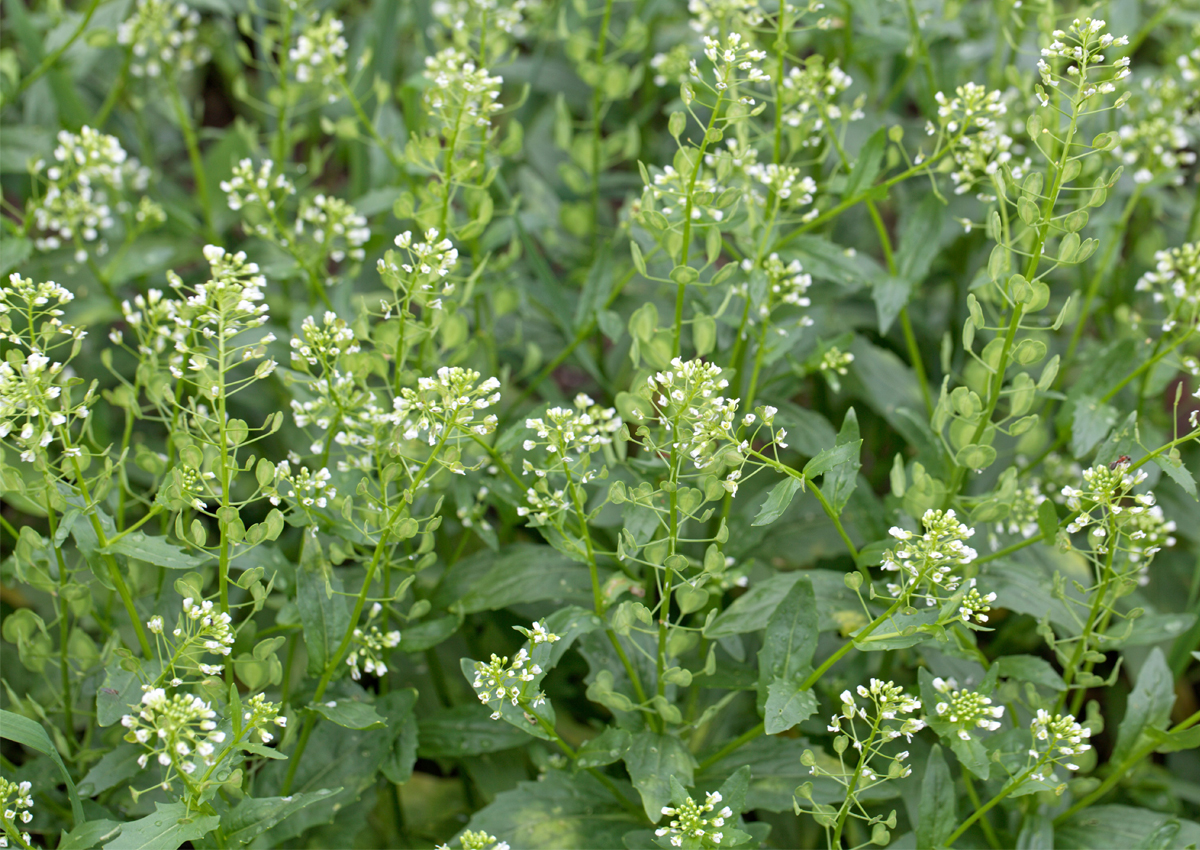
Scientists Use CRISPR to Turn Pennycress into an Oilseed Crop
October 20, 2022| |
Scientists at Illinois State University are working to turn the weed pennycress into a cold-tolerant, short-season oilseed similar to Camelina. In some ways, the process echoes the development of its plant relative, canola.
John Sedbrook, a professor of genetics at Illinois State University, and his colleagues are using CRISPR gene editing technology to modify pennycress. Like canola's rapeseed ancestors, pennycress suffers from high levels of antinutritional erucic acid in the oil and high levels of glucosinalates, particularly one called sinigrin, in the meal. This limits the value of pennycress as animal feed. Raw glucosinalate-containing plants have enzymes that break them down into toxic products in the body. While heating deactivates this enzyme, the glucosinalates can add an off taste to products such as milk, for example, if dairy cattle are fed rapeseed meal. Despite these challenges, the researchers brought the plant from weed to domesticated crop in about 10 years, remarkably fast, Sedbrook said, crediting tools such as gene editing. Sedbrook reports that they have already reduced erucic acid and fiber, which improved the quality of the meal, and the oil quality has been improved as well. Now they are working on the glucosinalate.
The domesticated pennycress is now marketed as Covercress, a cold-tolerant, short-season oilseed that yields about 32 percent oil content and 20 percent protein in the meal, similar to camelina. Its seeds are golden in color, easily distinguishing it from the black seeds of wild pennycress, and are about the same size as camelina. Test fields in Illinois have delivered 2,500 to 3,000 pounds per acre, which beats camelina's 1,800 to 2,200 lb per acre.
For more details, read the article in The Western Producer.
| |
You might also like:
- Biotech Firm Develops Pennycress as the Next Cash Crop
- Arvegenix Attempt to Domesticate Pennycress for Biofuel Production
- From Weed to Wonder Fuel
Biotech Updates is a weekly newsletter of ISAAA, a not-for-profit organization. It is distributed for free to over 22,000 subscribers worldwide to inform them about the key developments in biosciences, especially in biotechnology. Your support will help us in our mission to feed the world with knowledge. You can help by donating as little as $10.
-
See more articles:
-
Gene Editing Supplement (October 20, 2022)
-
Research and Tools
- Scientists Use CRISPR to Turn Pennycress into an Oilseed Crop
- French Experts Urge Using Genome Editing and Plant Biotech to Address Climate Change
- Targetted Editing of Bacterial Leaf Blight Susceptible Gene in Rice
- Alzheimer's Disease Research Advances with CRISPR Minipigs
- Experts Combine the Power of CRISPR and Spherical Nucleic Acids for Therapeutics
-
Policy Considerations and Approvals
- Regulatory Frameworks Among Factors that Affect Genome Editing Adoption, According to Experts
-
Read the latest: - Biotech Updates (December 17, 2025)
- Gene Editing Supplement (December 17, 2025)
- Gene Drive Supplement (February 22, 2023)
-
Subscribe to BU: - Share
- Tweet

